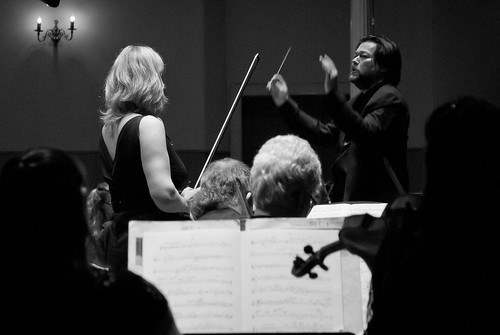In terms of the musical genres that we all identify with today, classical is definitely the one that stretches back furthest into history.

Classical Music Origins
The known use of music stretches as far back as Ancient Greek times. Mathematician Pythagoras created a tuning system and was one of the first to codify musical notation. Several instruments from Ancient Greece serve as the foundation for those that would become popular sections in orchestras today.
Music was also popular during the Roman Era, although there are few written music samples still in existence from this period.
Early Music
The medieval and renaissance periods, from 500 – 1400 and 1400 – 1600 respectively, are considered the early period of music. During the medieval years, Gregorian chanting was the most popular form of music, and instruments, although available, would not be widely introduced to music until the late 14th and early 15th centuries.
It was at this time that it became common practice to print music to ensure consistency in performance. The invention of the printing press in 1453 was a key moment in the history of classical music, and few people are aware of the impact this piece of equipment had.
Common Practice Period
The baroque period straddled the early and common practice periods, lasting from 1600 – 1760, and represented an increase in the complexity of music, particularly with the introduction of new instruments such as the pipe organ. The baroque period was also the beginning of music being used to create operatic drama, while vocalists also started to embellish musical arrangements with a variety of styles.
The classical and romantic periods followed baroque, and was characterised by orchestral arrangements becoming larger. As more was understood about music, arrangements would become more complex and challenging, leading to conductors needing to become even more skilled and knowledgeable about the music they were leading.
In addition to orchestras becoming bigger, the range of instruments would also become much more varied. Percussion instruments, in particular, were starting to appear within classical arrangements for the first time, while developments in the production of brass instruments meant they were being used to play a bigger range of notes, and were taking on a more prominent role in orchestras.
Modern & Contemporary Eras
The modern period overlapped the end of the romantic period by 20 years, from 1890 – 1910, and brings us to where we are today with classical music. The biggest changes in the last 100 years have actually been the rejection of many of the ideas and techniques pioneered in the past, particularly those from the common practice period that were seen as ‘the way it should be done’ for so many years.
Modern composers have challenged everything from the structure of orchestras to the tones and melodies that can be used, and as such, ‘classical contemporary’ music is today widely loved but is also controversial among musicians and listeners who prefer the traditional styles of the pre-20th century era.
Image Author: The Queen’s Hall
Are you a guitarist? Check out our full range of online guitar lessonsAre you a saxophonist? Check out our full range of online saxophone lessons
Subscribe to Pro Music Tutor from as little as £7.99 per month
Related Posts
-
Is Music Theory Important to Modern Musicians?
The importance of music theory is a hot debate topic in the world of professional music. Some believe knowledge of music theory is what makes you a true musician, whereas some feel their lack of music theory knowledge is like a badge of honour. With the eternal debate over the importance of music theory raging […]
View All >> -
5 Ways Spanish Music Influenced the World
Contemporary popular music has transcended all national boundaries, with different types of music being performed and listened to in all corners of the world. Each culture also adds their own little tweaks and twists to the music, constantly creating new sounds and influences. Spanish music has deeply influenced the popular music we listen to today. […]
View All >>
Latest Blog Entries
-
The Benefits of Online Music Education
Learning music has never been easier, since the internet and modern technological advancements have opened the doors to countless possibilities, expanding the subjects people can choose from and how the lessons are taught. Now, people can study a whole host of music-related topics; from learning to play guitar or DJing, to understanding the inner workings […]
View All >> -
Essential Jazz Guitar Scales that are Easy to Learn
Improvising in jazz requires the ability to play in different keys over different chords. Results certainly do not come overnight, but with diligent practice, you would be surprised by what you can achieve. Many people ask me about what scales I use as if they were some big secret. While knowing your scales is very […]
View All >>
Blog Categories
- Categories
- Guitar Tips (93)
- History (36)
- How-To (38)
- Interviews (3)
- Music Industry (121)
- Prolinks Guitar (2)
- Prolinks Lessons (3)
- Prolinks Tutor's Profile (1)
- Saxophone Tips (40)
- Uncategorized (6)
Tags
Archive
- November 2018 (1)
- February 2018 (1)
- December 2017 (1)
- November 2017 (1)
- October 2017 (1)
- July 2017 (4)
- May 2017 (2)
- April 2017 (1)
- August 2016 (2)
- July 2016 (1)
- June 2016 (2)
- May 2016 (3)

